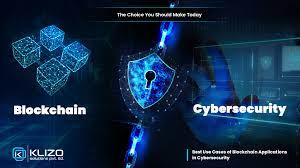
How Block Chain Works.
11 January 2022Blockchain has become a common expression in matters related to the famous Bitcoins, and sometimes the two terms get a little confused. If you want to find out, after all, what Blockchain really means and what it is for.
Table of Contents
How did Blockchain come about?
In 2008, an article was presented to the discussion group “The Cryptography Mailing” containing the working principles of a cryptocurrency called Bitcoin. The proposal was to create a global digital currency that works on a peer-to-peer (peer-to-peer) network. It would allow online payments to be sent completely securely, without the involvement of financial institutions for all network participants. This article was published under the pseudonym of Satoshi Nakamoto, the probable creator of Bitcoins.
Already in 2009, the Bitcoin network began to work with the launch of its first client and today it is estimated that there are 16 million more of the cryptocurrency in circulation. This digital currency emerged to, among other things, avoid duplicate transactions and make them more reliable and secure on the internet.
However, in the digital environment practically everything can be changed, copied or exchanged. And in this context, Blockchain emerged, which was the solution for the first two characteristics, avoiding duplicity failures or even fraud.
But what is the relationship between Blockchain and Bitcoin anyway? It is natural for people to confuse the two things, since Blockchain is the platform used for the operation of the Bitcoin network and several other cryptocurrencies. Now, in context, understand, in a simple way, how Blockchain works.
What is Blockchain?
We can say that Blockchain is a distributed database system, maintained and managed in a decentralized and shared way, in which all participants are responsible for storing and maintaining the database.
The technology is based on four main characteristics, namely:
- Operations security;
- Storage/computing decentralization;
- Integrity;
- Transaction immutability.
In other words, Blockchain is a network that works with linked blocks, very secure, that always carry content along with a fingerprint. To better understand the concept, imagine now some “chests” (or blocks) in sequence, with secrets ( cryptography ) in their lock. The later chest will store the contents and fingerprint of the former plus its own contents and, with the two contents, create its own fingerprint, and so on.
How does Blockchain work?
Blockchain works as a ledger of facts replicated on computers participating in a peer-to-peer (peer-to-peer) network. The ledger is a digital ledger, like a cash book. The difference is that your information, once registered, cannot be deleted. These records or facts can be any number of things, not just monetary transactions. The content can then be any kind of document, or even a small database.
The members participating in the network are called peers or “nodes/point” and all information, operation or transaction made in the ledger is encrypted and has its own digital signature. When a peer, wants to add a new fact to the ledger, a consensus between previously determined peers is necessary , to decide if the fact will be registered or not. If there is consensus, once the fact is registered, it cannot be deleted.
Understanding Blockchain-Related Technical Terms Better
Throughout the article, some technical terms have emerged from which it is not possible to escape and which are often a little frightening. So now let’s explain them a little better.
facts
Facts are facts that need to be recorded, which can be a transaction, a content or even a computer program. They are linked one by one, forming a chain of blocks, hence the term Blockchain. These blocks follow a mathematical logic, making them dependent on each other.
Blocks or Chests
The chests or blocks are the set of facts. To understand a little more about the Blockchain process, we will now go inside these blocks. When adding a new fact (content or information) to a block, the hash responsible for the block’s digital signature is created.
hash
We can say that the hash is a mathematical function responsible for generating a code that represents the data inserted in the block. In essence, it transforms a large amount of data into a small amount of information. This is the digital signature of some file, or a transaction (as in Bitcoins) or the signature of a block, in the case of Blockchain.
It is responsible for signing the block content and if there are changes in the block information, the hash changes. When creating new blocks, if the hash already exists in the previous block, a verifiable seal is created in which it is possible to identify if a block has been altered, in order to invalidate it.
The validity
Validation is performed by computer programs replicated across the network or in predetermined sets of peers (the nodes, or points). For validation to occur, a peer on the network needs to follow a defined set of rules and be able to assemble a block, in the example of cryptocurrencies, a set of monetary transactions. There is competition between nodes to perform validation before their competitors, which generates a reward.
In the Bitcoin process, this process is called mining and consists of completing the assembly of a given block, through the processing of a very complicated mathematical operation that guarantees that the encrypted hash is valid. Upon completion of the process, it can be easily verified by other peers, confirming the correct result.
Main advantages of Blockchain
The main question about Blockchain is related to the main advantages that the technology has compared to other information security technologies. Called the “Trust Protocol”, Blockchain is more practical, generating more security between companies that exchange sensitive information and data. In addition, there are other features that exemplify the technology’s advantages over conventional ones. Let’s go to some of them:
– Time Savings: As with some transactions, such as a global payment system, the transaction process with Blockchain can only take minutes compared to conventional systems that take hours or even days.
– Distributed Ledger: the “cash” ledger, block register system, is shared across the entire network and is easy to verify. This increases trust, with greater transparency, facilitating audits and ensuring the smooth functioning of the technology infrastructure on which users depend.
– Privacy: it is possible to ensure adequate transparency of information, parts of the ledger can be hidden, without harming the process of verification and validation of blocks.
– Cost minimization: Reliability of access to a distributed database eliminates operational costs and, mainly, those of intermediaries.
– Risk reduction: as well as ledgers distributed throughout the network, ensuring the transparency of transactions, the technology also has smart contracts, which cannot be changed once written, preventing fraud, tampering and other cybercrimes. In addition, transactions are verified by network participants and therefore cannot be fraudulent.
How to Deploy Blockchain in Your Business
Blockchain technology, despite being developed for cryptocurrency transactions, also has numerous other applications, such as protection of sensitive information exchanges and online transactions, property control, management of people’s digital identity and production chains, among others.
For many experts and even universities, Blockchain tends to become more and more promising, surpassing the use in the famous Bitcoin bubble, and gaining global space for many other uses.
Want to learn more about how Blockchain can help protect your company’s transactions, information and data? Schedule an appointment with one of our consultants and start strengthening the security of your information and data right now.



















